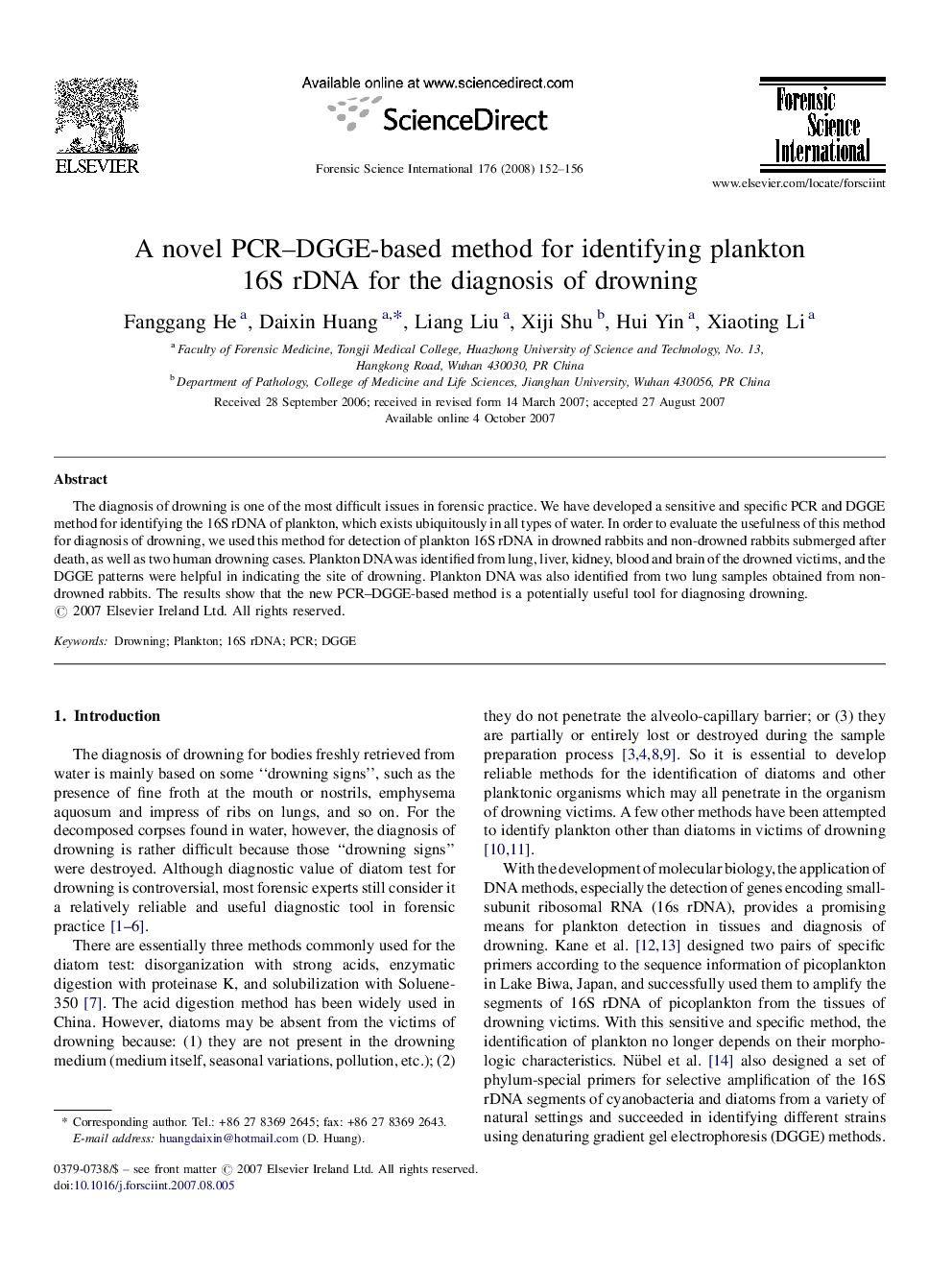| Article ID | Journal | Published Year | Pages | File Type |
|---|---|---|---|---|
| 97537 | Forensic Science International | 2008 | 5 Pages |
The diagnosis of drowning is one of the most difficult issues in forensic practice. We have developed a sensitive and specific PCR and DGGE method for identifying the 16S rDNA of plankton, which exists ubiquitously in all types of water. In order to evaluate the usefulness of this method for diagnosis of drowning, we used this method for detection of plankton 16S rDNA in drowned rabbits and non-drowned rabbits submerged after death, as well as two human drowning cases. Plankton DNA was identified from lung, liver, kidney, blood and brain of the drowned victims, and the DGGE patterns were helpful in indicating the site of drowning. Plankton DNA was also identified from two lung samples obtained from non-drowned rabbits. The results show that the new PCR–DGGE-based method is a potentially useful tool for diagnosing drowning.
